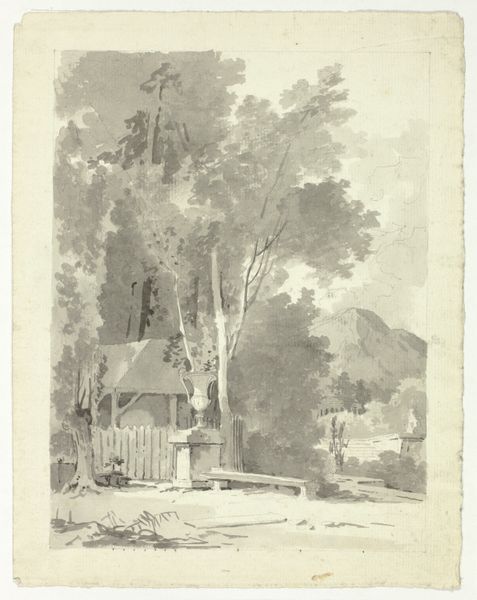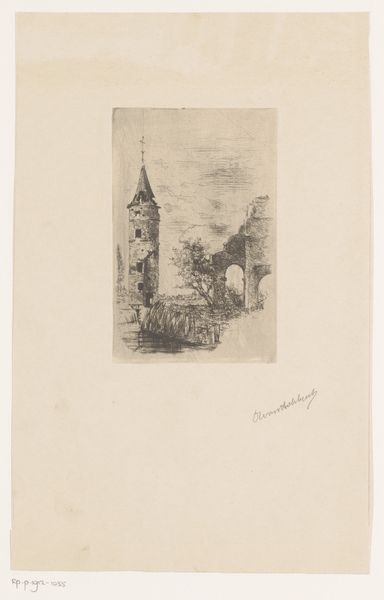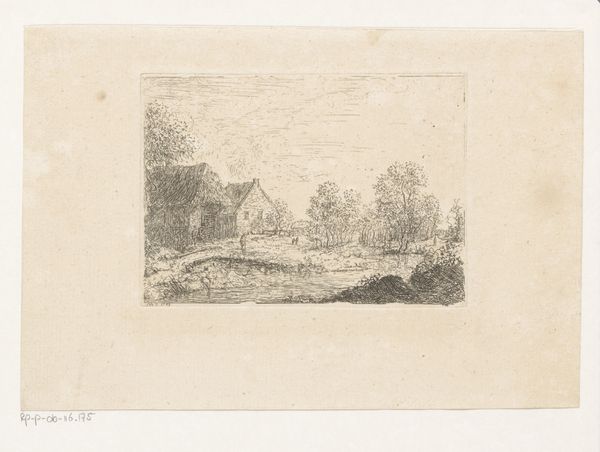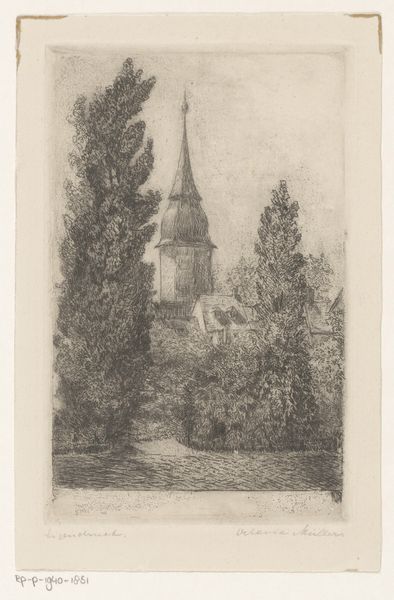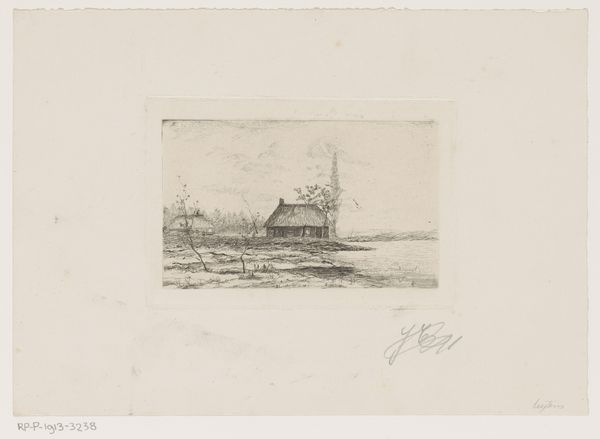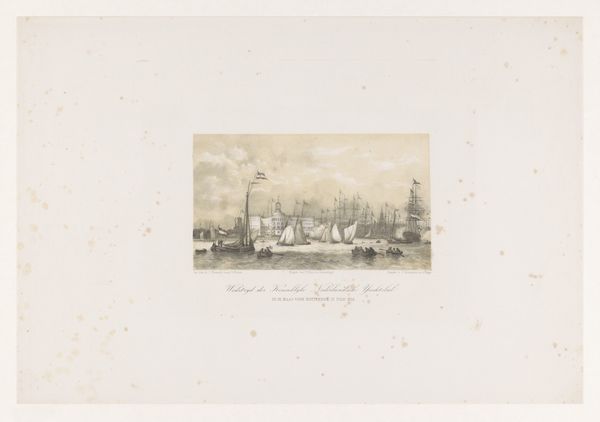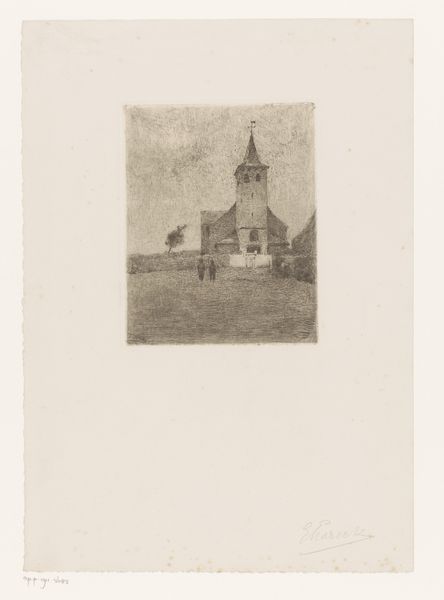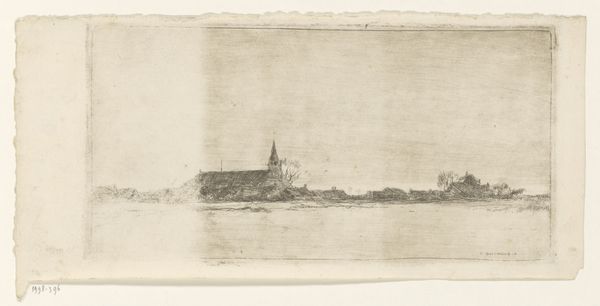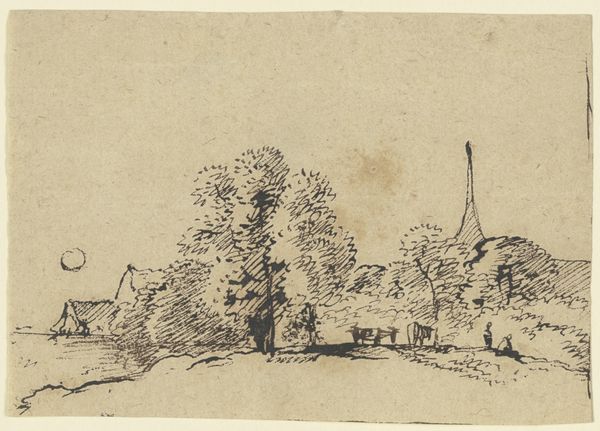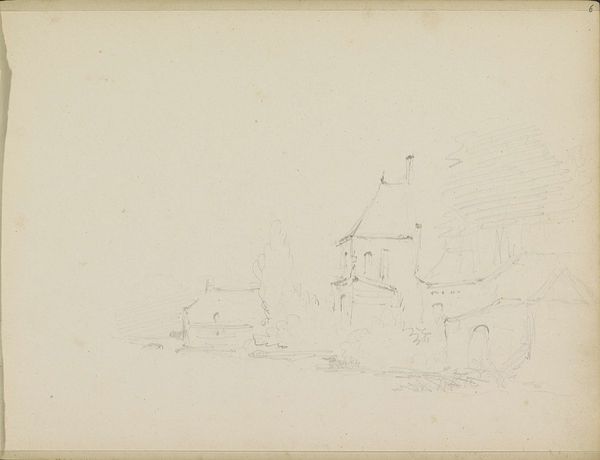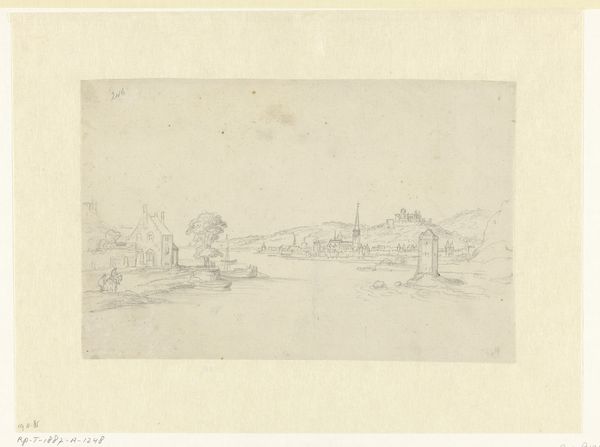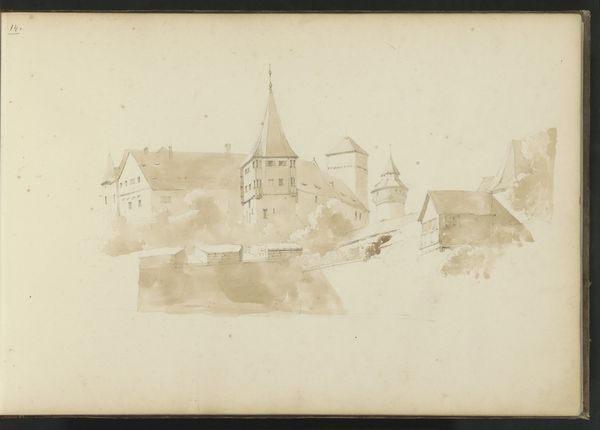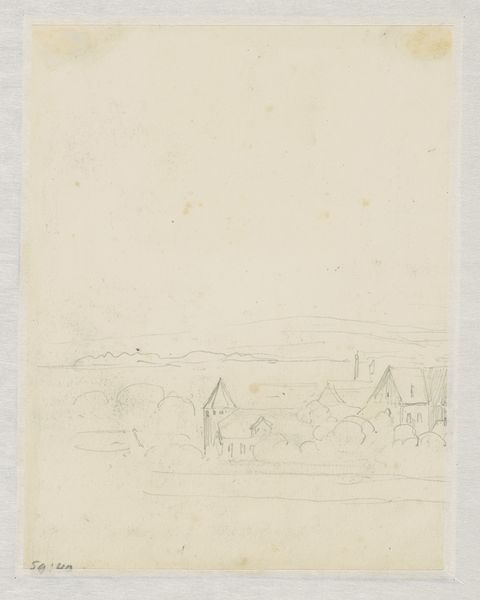
drawing, pencil, architecture
#
drawing
#
16_19th-century
#
landscape
#
etching
#
pencil
#
architecture
Copyright: Public Domain
Editor: Here we have Louis Eysen’s 1892 pencil and etching drawing, “Der Kirchturm von Cortina d'Ampezzo," currently residing at the Städel Museum. I'm immediately struck by the contrasting detail. The architecture is crisply defined, but the background is quite nebulous. What formal elements do you find most compelling? Curator: The deliberate manipulation of line and tone invites us to dissect its inherent structure. Observe how Eysen utilizes hatching and cross-hatching techniques. Where does he employ them, and to what effect? Note the concentration around the steeple and the subtle gradients defining the mountainous backdrop. Editor: He seems to be using denser, darker lines to delineate the architectural forms and lighter, more sparse marks to suggest atmospheric perspective for the background, making it look further away and a bit hazy. Is this contrast a dialogue between the eternal and the ephemeral? Curator: Precisely. The tower, rigidly vertical, represents permanence, whereas the soft gradations shaping the mountains embody a transient state. Consider, also, the orientation of the steeple, bisecting the picture plane. How does this division influence the composition? Is there a sense of balance, or is there intentional disequilibrium? Editor: It appears to create a sort of tension. The detailed architecture on one side pulls our focus, yet the expansive emptiness on the left generates a sense of yearning, an unfinished quality. The church anchors it all though, a focal point, but almost a barrier. Curator: Exactly! Eysen masterfully plays with figure and ground. While the foreground claims our immediate attention, the interplay between light and shadow within the mountainous space suggests a receding depth. Perhaps that is the piece's key tension. Editor: So it seems the power isn't just in what is there, but how the materials are deployed. This really gets to the foundations of landscape art itself. Curator: Indeed. Focusing solely on its internal elements—line, form, contrast, and composition—reveals the complex dialogue Eysen orchestrates within the confines of this seemingly simple sketch. This unveils its foundational power.
Comments
No comments
Be the first to comment and join the conversation on the ultimate creative platform.

